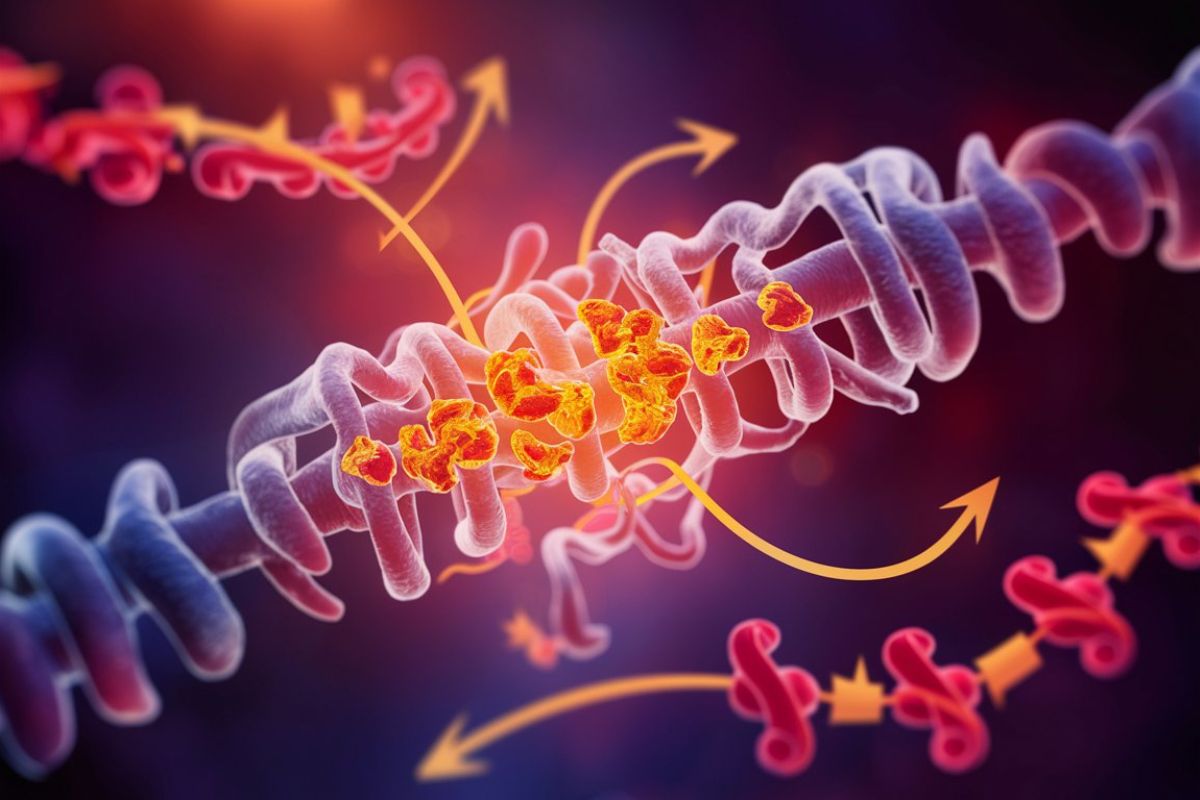
Alpha-L-iduronidase deficiency, also known as Mucopolysaccharidosis Type I (MPS I), is a rare genetic disorder. This condition affects the body's ability to break down certain complex carbohydrates. Symptoms can range from mild to severe, impacting physical abilities, organ function, and even cognitive development. Early diagnosis is crucial for managing the disease effectively. Treatments include enzyme replacement therapy and, in some cases, bone marrow transplants. Genetic counseling is recommended for families affected by MPS I. Understanding this condition can help in providing better care and support for those living with it. Let's delve into 20 essential facts about Alpha-L-iduronidase deficiency.
What is Alpha-L-Iduronidase Deficiency?
Alpha-L-Iduronidase Deficiency, also known as Hurler Syndrome or MPS I, is a rare genetic disorder. It affects the body's ability to break down certain complex molecules. This leads to a buildup of glycosaminoglycans (GAGs) in cells, causing various health issues.
-
Alpha-L-Iduronidase Deficiency is a Lysosomal Storage Disorder. Lysosomes are cellular structures that break down waste. In this disorder, the enzyme alpha-L-iduronidase is missing or not working properly, leading to waste buildup.
-
It is inherited in an autosomal recessive pattern. Both parents must carry the defective gene for a child to be affected. Each child has a 25% chance of inheriting the disorder if both parents are carriers.
-
Symptoms can appear in infancy or early childhood. These include developmental delays, coarse facial features, and enlarged organs. Early diagnosis is crucial for managing the condition.
Symptoms and Diagnosis
Understanding the symptoms and how the condition is diagnosed can help in early detection and treatment.
-
Common symptoms include skeletal abnormalities. These can manifest as joint stiffness, short stature, and abnormal bone growth. Regular monitoring by a specialist is often required.
-
Corneal clouding is a frequent issue. This can lead to vision problems. Eye exams are essential for children with the disorder.
-
Hearing loss is another common symptom. Regular hearing tests can help manage this aspect of the condition.
-
Heart problems are prevalent. These can include valve abnormalities and heart enlargement. Cardiologists often play a key role in the care team.
-
Diagnosis often involves enzyme assays. These tests measure the activity of alpha-L-iduronidase in blood or tissue samples. Genetic testing can confirm the diagnosis.
Treatment Options
While there is no cure, several treatments can help manage symptoms and improve quality of life.
-
Enzyme replacement therapy (ERT) is a common treatment. This involves regular infusions of synthetic alpha-L-iduronidase. It can help reduce GAG buildup in cells.
-
Hematopoietic stem cell transplantation (HSCT) is another option. This can provide a source of healthy enzyme-producing cells. It is most effective when performed early in life.
-
Physical therapy can help manage joint stiffness. Regular exercises can improve mobility and reduce pain.
-
Surgery may be necessary for some complications. This can include procedures to correct skeletal abnormalities or heart issues.
Living with Alpha-L-Iduronidase Deficiency
Managing daily life with this condition involves a multidisciplinary approach.
-
Regular medical check-ups are essential. These help monitor the progression of the disease and adjust treatments as needed.
-
Nutritional support is often required. A balanced diet can help manage symptoms and improve overall health.
-
Educational support is crucial. Children with developmental delays may need special education services.
-
Emotional and psychological support is important. Counseling can help families cope with the challenges of the disorder.
Research and Future Directions
Ongoing research aims to improve treatments and find a cure.
-
Gene therapy is a promising area of research. This involves correcting the defective gene responsible for the disorder.
-
Clinical trials are ongoing. These studies test new treatments and therapies to improve patient outcomes.
-
Patient registries help track the disease. These databases collect information on symptoms, treatments, and outcomes to aid research.
-
Support groups provide valuable resources. Connecting with other families can offer emotional support and practical advice.
Understanding Alpha-L-Iduronidase Deficiency
Alpha-L-Iduronidase Deficiency, also known as Hurler Syndrome, is a rare genetic disorder. It affects the body's ability to break down certain complex molecules. This leads to a buildup in various tissues, causing progressive damage. Early diagnosis is crucial for managing symptoms and improving quality of life. Treatments like enzyme replacement therapy and bone marrow transplants can help, but there's no cure yet.
Raising awareness about this condition can lead to better support and resources for affected families. Researchers continue to explore new treatments and potential cures. Staying informed and advocating for medical advancements can make a significant difference. Understanding the basics of Alpha-L-Iduronidase Deficiency empowers individuals to seek proper care and support. Knowledge is a powerful tool in the fight against rare diseases.
Was this page helpful?
Our commitment to delivering trustworthy and engaging content is at the heart of what we do. Each fact on our site is contributed by real users like you, bringing a wealth of diverse insights and information. To ensure the highest standards of accuracy and reliability, our dedicated editors meticulously review each submission. This process guarantees that the facts we share are not only fascinating but also credible. Trust in our commitment to quality and authenticity as you explore and learn with us.


